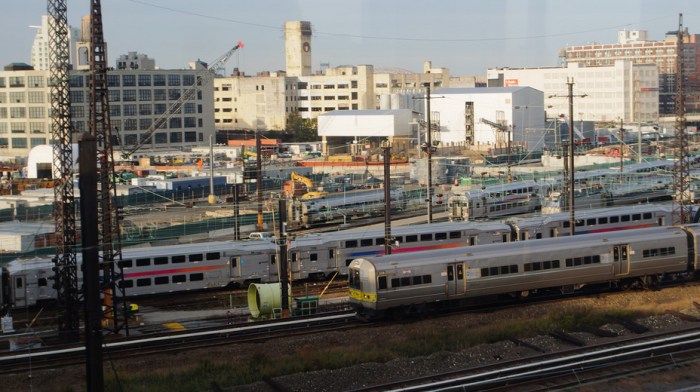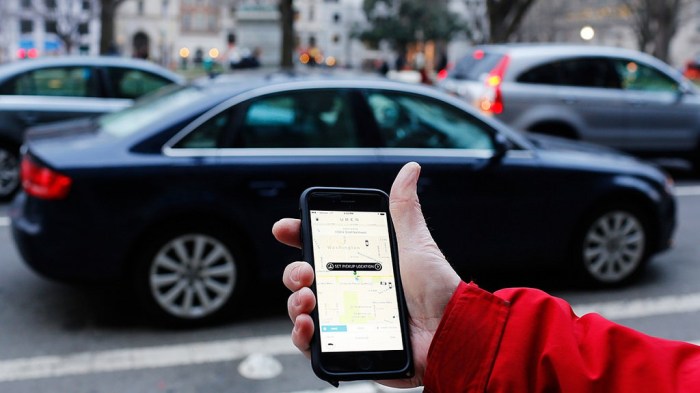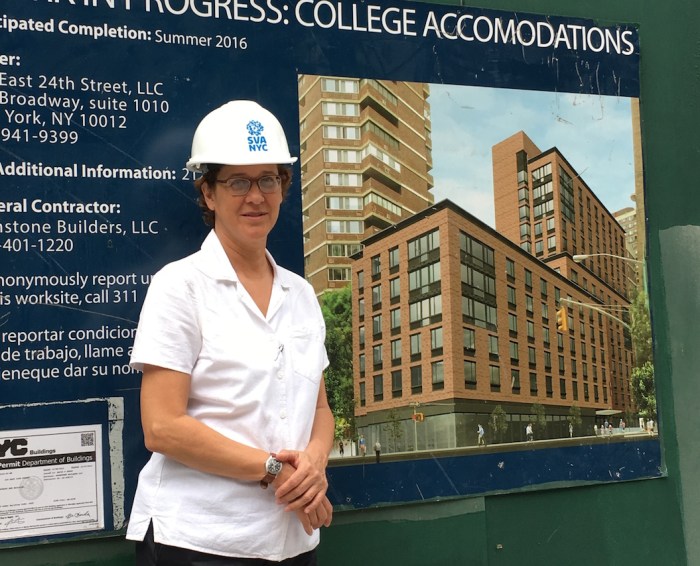Even on the sunniest day, a dark cloud lingers. It is the veil of exhaust and stench of garbage that hovers over northern Bushwick.
Osiris Arias and his wife, Marina, have endured it since they moved to the Brooklyn neighborhood in 1995, and it has only gotten worse, they say. The source of their problem stands a few hundred feet from their home: awaste transfer station. Operated by Five Star Carting, the transfer station is one of 15 privately-owned facilities in the area. Nearly half of New York City’s daily mountain of trash is trucked in, sorted, and trucked out from those facilities. “If that thing wasn’t here it would be perfect,” said Arias, an immigrant from the Dominican Republic. The family of five does not have the means to move, so they have remained in their first-floor apartment on the corner of Thames Street and Knickerbocker Avenue. Their youngest son, 9-year-old Oziel, suffers from debilitating asthma attacks, which the couple attributes in large part to the effects of the transfer station.
Three neighborhoods in three boroughs take in nearly 80 percent of the city’s trash, about 40,000 tons a day. They are located in the South Bronx; Jamaica, Queens; and North Brooklyn. There are no waste transfer stations in Manhattan, despite the fact that the borough produces 40 percent of the city’s garbage. Attempts to place one on the Upper East Side met with stiff opposition from the community, yet resulted in a compromise in 2015 for a marine transfer station that is slated to open in 2020. Staten Island doesn’t have a waste transfer facility, but residents there had to live for decades with the effects of the Fresh Kills Landfill before it closed in 2001.
A recent City Council bill addresses the issue and seeks to help the affected neighborhoods. But that, too, has encountered opposition.
Introduced in 2014, the bill would have capped the maximum amount of garbage each company could truck into each community district.
RELATED: EXCLUSIVE: Advocates push de Blasio to revamp how NYC recycles its commercial waste The original legislation sought an 18 percent reduction in the maximum amount of waste the facilities were allowed to process. Following forceful resistance, the bill was revised in 2016. The new version calls for a 50 percent reduction in maximum capacity, but with exemptions if the companies do more recycling and use rail and marine transfer instead of trucks. The updated bill also provides for better worker protection.
Called Intro 495-A, the bill’s primary sponsors are council members Stephen Levin and Antonio Reynoso, who both represent the areas of Brooklyn that feel the impact from the waste stations. Levin said he understands the issue is a controversial one, but he maintains a few neighborhoods shouldn’t have to bear most of the burden — and potential health risks — for most of the city. “It’s been unregulated for too long. It’s been allowed to persist in this inequitable framework for decades,” Levin said. Eighteen council members remain supportive of the new bill, fewer than the original one. After languishing, the bill may see some movement later this month. Private garbage and carting companies oppose Intro 495, as do elected officials who rely on those facilities for economic viability in their districts. Trash capacity restrictions will lead to job loss, they contend, and diverting garbage to new locations will increase costs. Calls to Five Star Carting were not returned.
Mayor Bill de Blasio has not weighed in on the measure. The mayor’s office referred to a statement provided by the Sanitation Department, which said it is “committed to reducing the burden of waste management infrastructure on historically overburdened communities. We look forward to working with the Council on ways to achieve this goal.” In the Hunts Point section of the Bronx, the effects of waste transfer stations in the neighborhood are compounded by the pollution from the trucks that cart the garbage in and out.
Andy Gonzelez, 17, lives in that area with his family, just off of the Bruckner Expressway. He holds his breath outside his apartment, he says, because the block he lives on is like a gateway to the waste transfer stations. RELATED: Community groups, council members call for waste equity in outer boroughs Melissa Iachan, an attorney for New York Lawyers for the Public Interest, said the council’s bill is meant to limit the continued growth of the companies controlling the industry in places like Hunts Point and Bushwick. Iachan said the situation started to get worse 15 years ago, after the Staten Island landfill was finally capped.
“Enterprising people saw money and control by opening transfer stations and charging the city to accept the garbage,” she said. “These business people were looking to build their facilities in neighborhoods where residents weren’t organized enough, were scared to speak up, and didn’t have the resources to fight against them.” They included residents like the Ariases in Bushwick. The couple didn’t think twice about letting their two older children, Jahn and Elizabeth, play outside. But by the time Oziel arrived in 2007, the flow of trash into Bushwick had increased nearly tenfold. Oziel was allowed to play outside until he was 3, when he began to feel sick. “He was in the hospital for five days because his air passages were so blocked,” said Osiris, who attributes the child’s condition to the fumes in the neighborhood. Three years later, Oziel was back in the hospital gasping for air. He now uses an inhaler throughout the day in addition to oral medication. Despite the treatment, his headaches and congestion frequently keep him home from school. His father says he hopes, for his family’s sake and for their neighbors, that something can be done about the transfer stations. In the meantime, he is looking at new places to live.






















